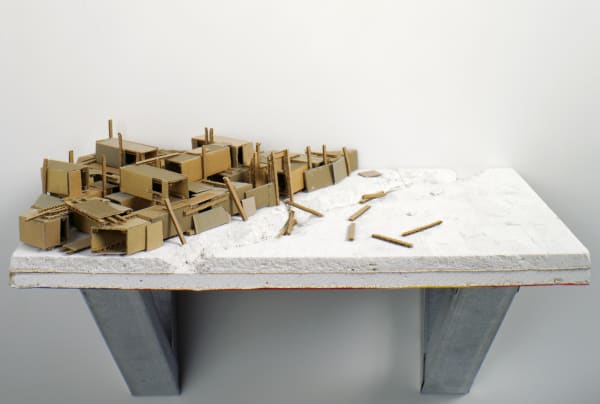Michael Ashkin
Full title:
Untitled (where the toll for dreaming is exacted daily upon awakening).
Untitled (where each new morning brings only the terror of exposure).
Untitled (where even the shadows fear the sun).
Untitled (where transcendence appears as a drone sent from afar by men with thick torsos). Untitled (where one is hunted in direct proportion to one's remoteness).
Untitled (where each man's solitude is another man's due). Untitled (where whomever is owned owns tenfold).
Untitled (where God is again sculpted from the same materials). Untitled (where the prophet can only be a plagiarist).
Untitled (where the plagiarist is condemned in words still more debased).
Untitled (where one is castigated for a pessimism still short of its object).
Untitled (where pessimism is cut down leagues before the horizon of its redemption).
Untitled (where optimism is a form used to spare language its truth).
Untitled (where each new morning exposes objects to the terror of description).
Untitled (where the clouds on the horizon fill one with the longing of centuries).
Untitled (where the land one owns lies still west of the clouds).
Untitled (where the slightest movement of one's head suggests the scale of the not-possible). Untitled (where the passion of the day sets as quickly as the sun).
Untitled (where each new day promises only the continuation of yesterday).
Untitled (where hiding places are many, escape only one).
Constructed out of cardboard on the gallery floor, Michael Ashkin's Hiding places are many, escape only one, a section of a sprawling squatter city, is made up of clusters of buildings with no real center or hierarchy of purpose. Foregoing program or central planning associated with towns or cities governed through a set of codes which evolve over time to address health, safety, and business concerns, the apparently random association of these structures seems to have been generated from a combination of accident and necessity.
In the absence of a coherent relationship between municipal and commercial structures, Ashkin's anarchic representation of an "unplanned" community represents a condition which a growing number of the world's population inhabits, a nebulous territory that might be defined only in contrast to the secured (green) zones around which many of these places develop.
![Michael Ashkin, Untitled (where the toll for dreaming is exacted daily upon awakening). [an abridged title, the first of twenty-one lines], 2008](https://artlogic-res.cloudinary.com/w_1600,h_1600,c_limit,f_auto,fl_lossy,q_auto/ws-ernahecey/usr/images/artworks/main_image/items/ae/ae87ec77a9bf4d328baa62a69a59536b/market-forces_michael-ashkin_2.jpg)





